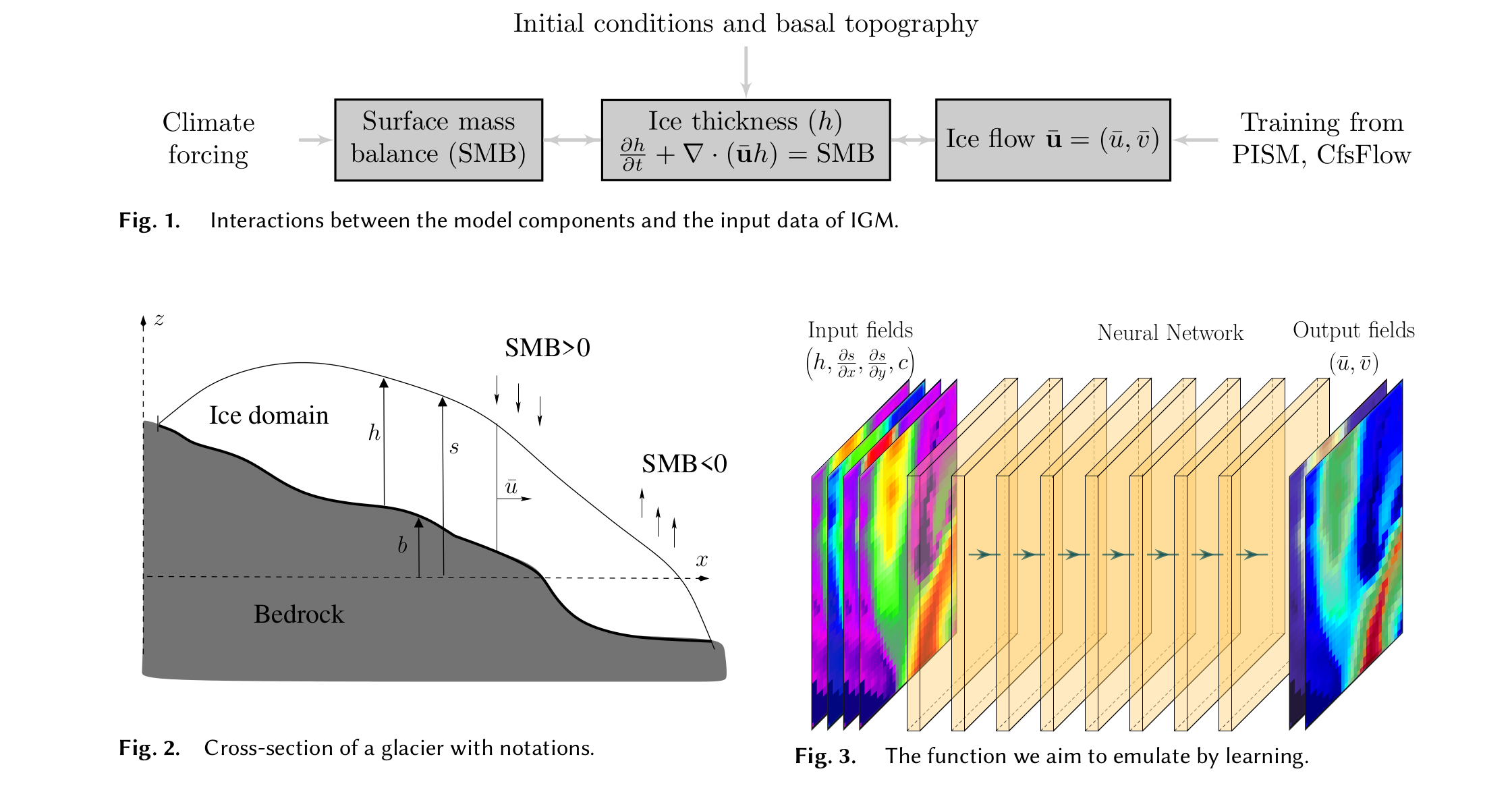We have 1 PhD and 1 postdoc open position in glacier and landscape evolution modelling at the University of Lausanne (UNIL), Switzerland. The two positions involve model developments of IGM, and applications to paleo glacier evolution in the Alps. For more information, please visit this page.
IGM is a very young model, continuously developped, with limited documentation and testing. To start with, I recomand to start with examples (via colab notebooks or the example folder). If you have ideas of extensions or applications, you would like to contribute, please contact me at guillaume.jouvet at unil.ch.
IGM now includes a physics-informed deep learning emulator (check this paper), which is a more elegant and efficient training strategy than the one used previously, especially because it is generic and no external instructor models are needed. Users may use it by switching the version from default/original 'v1' to 'v2' via parameter glacier.config.version. Check at the section 3.Workflow of the wiki and the paper for more information.
The Instructed Glacier Model (IGM) simulates the ice dynamics, surface mass balance, and its coupling through mass conservation to predict the evolution of glaciers, icefields, or ice sheets (Figs. 1 and 2).
The specificity of IGM is that it models the ice flow by a Neural Network, which is trained with state-of-the-art ice flow models (Fig. 3). By doing so, the most computationally demanding model component is substituted by a cheap emulator, permitting speed-up of several orders of magnitude at the cost of a minor loss in accuracy.
IGM consists of an open-source Python code, which runs across both CPU and GPU and deals with two-dimensional gridded input and output data. Together with a companion library of ice flow emulators, IGM permits user-friendly, highly efficient, and mechanically state-of-the-art glacier simulations.
IGM's documentation can be found on the dedicated wiki
The easiest and quickest way is to get to know IGM is to run notebooks in , which offers free access to GPU, or to install IGM on your machine, and start with examples.
Feel free to drop me an email for any questions, bug reports, or ideas of model extension: guillaume.jouvet at unil.ch

